Do you want to be informed on new Posts on this Thread? (members only)
| S&S Swan Maintenance - Swan 48 keel-to-hull joint |
|---|
|
Join Date: 22 May 2010
Posts: 4 |
||
|---|---|---|
|
Swan 48 keel-to-hull joint Greetings all, I'm the owner of Karinga, 48/040 - 1975, and am trying to figure out the best course of action regarding my keel-to-hull joint. The previous owner had the leading and trailing edges filled with rubbery mastic to form an expansion joint, which eliminated any cracks (helpful since she's got a hydraulic backstay tensioner). I've taken out the mastic, and have found a couple of things that concern me - at the trailing edge, there's a good bit of rusty water leaking out, and at the leading edge, there was moisture present along with what appears to be a bit of delamination of the bottom surface of the GRP hull. (photos attached). I've removed all tankage and cleared the bilge in preparation for either: - Removing all the accumulated rust on the mast step weldment and priming/painting, re-tensioning the keel bolts, and re-filling the expansion joints with a mastic, or (should it come to it...): -Dropping the keel, checking the condition of the bolts, and re-bedding the keel before continuing on with the above.
Any thoughts would be greatly appreciated  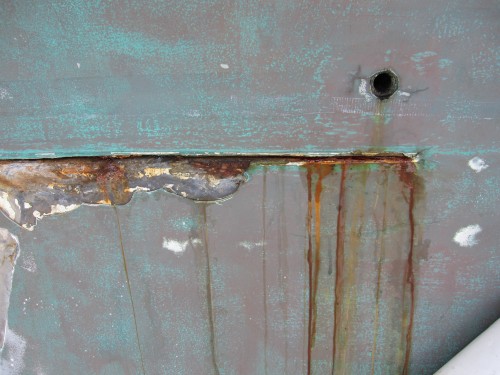 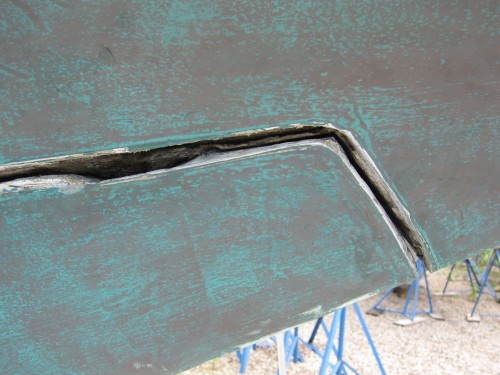 |
|
Join Date: 22 May 2010
Posts: 4 |
||
|---|---|---|
|
Also, what do folks think about removing the keel bolt nuts while I'm removing the rust from the mast step/keel support weldment? How about removing the oil-soaked fiberglass that covers the bottom flange? The glass is no longer bonded to the steel, but I don't know how much it helps with keeping any moisture oxygen-starved to reduce the rusting underneath.
|
|
Join Date: 02 February 2007
Posts: 126 |
||
|---|---|---|
|
Greetings all, I'm the owner of Karinga, 48/040 - 1975, and am trying to figure out the best course of action regarding my keel-to-hull joint. The previous owner had the leading and trailing edges filled with rubbery mastic to form an expansion joint, which eliminated any cracks (helpful since she's got a hydraulic backstay tensioner). I've taken out the mastic, and have found a couple of things that concern me - at the trailing edge, there's a good bit of rusty water leaking out, and at the leading edge, there was moisture present along with what appears to be a bit of delamination of the bottom surface of the GRP hull. (photos attached). I've removed all tankage and cleared the bilge in preparation for either: - Removing all the accumulated rust on the mast step weldment and priming/painting, re-tensioning the keel bolts, and re-filling the expansion joints with a mastic, or (should it come to it...): -Dropping the keel, checking the condition of the bolts, and re-bedding the keel before continuing on with the above.
Any thoughts would be greatly appreciated Mennom, I have had three S&S Swans with similar keel construction since 1985 and my advice would be to not over react to what might look like structural problems. I bought my original 37 cheaply as a survey had said it needed a new rudder. Nautor told me that they'd deliberately used removable filler for the rudder fittings and I had it replace and the rudder was fine. The keel and trim tab on your boat doesn't look too bad. The professor will know, but I think the keels were originally bolted to the hull with some flexible material in between. It often needs replacing but that's all. At the time that your 48 was built, Nautor were building the boats to be very heavy and tough.
|
|
Join Date: 02 January 2008
Posts: 1547 |
||
|---|---|---|
|
Dear Mennom and Gavin The proposed course of action is correct, here a few additional comments. The pictures show that a big piece of lead has been added to the bottom of the keel. This increases the loads in the joint. The keel was originally attached with wet laminate laid between, resulting in a solid joint with all voids filled. The recommendation is not to use flexible mastic beween keel and hull, as this would require a very thick layer if the windward side should not split open when the yacht heels. Flexible mastic is, however, needed where the bolts pass through the keel plank laminate. The slots around the bolts need to be filled completely from the inside before the washers and nuts are put in place. Rusty water from the joint requires inspection of the keel bolts. There are two possible reasons - corrosion on the bolts, which is a serious matter - or on the washers left from the casting procedure in the lead surface, and without significance. Ideally the joint should be kept very tight so water can not enter and reach the bolts. Referring to the remaining mast step plate thickness a rule of thumb is that 2/3 of original is sufficient, except directly under the mast where 3/4 would be advisable. Action against the corrosion is needed, the most effective would be hot-dip galvanizing, but this requires removal from the boat. To reduce corrosion it would be advisable to keep the bilges dry. Increasing the size of the mast shoe drain holes would contribute to the ventilation of this area, there is a strong upward draft in the mast when the sun shines. Lars |
|
Join Date: 22 May 2010
Posts: 4 |
||
|---|---|---|
|
Dear Professor and Gavin,
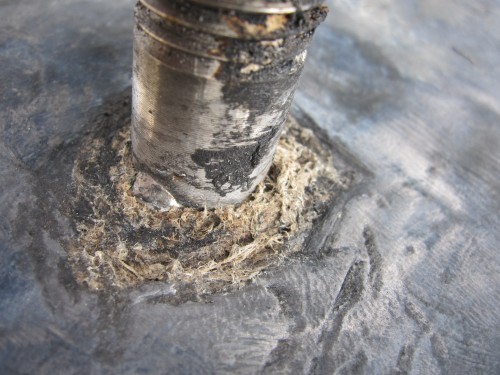 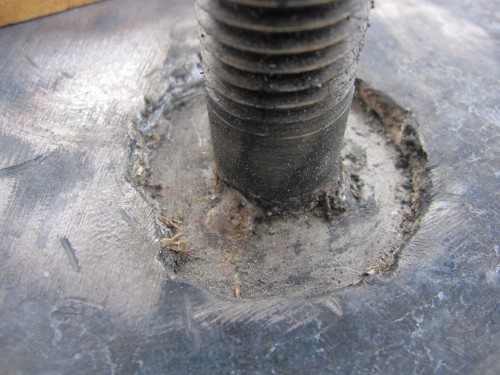 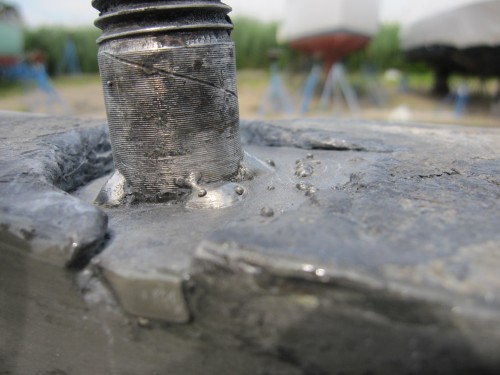 |
- Threads : 1707
- Posts : 10233
- Members: 821
- Online Members: 0

